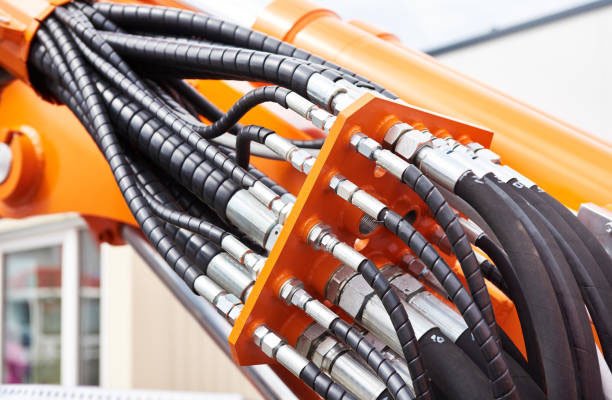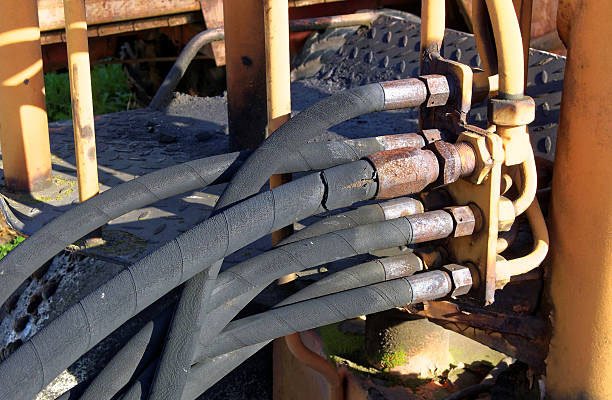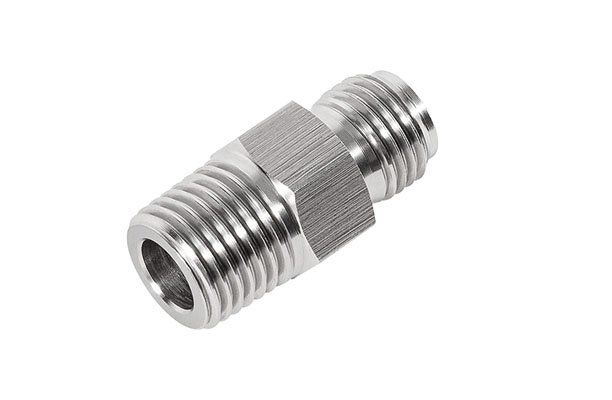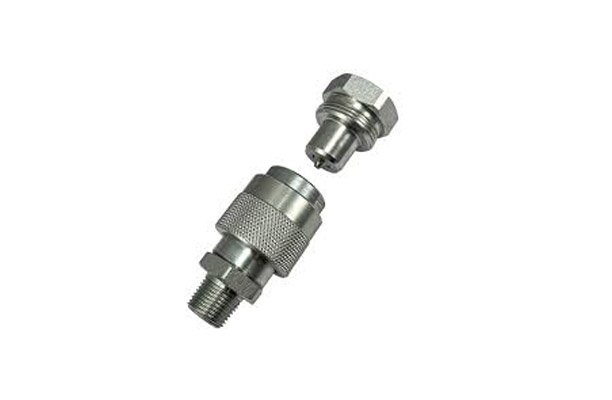I. Introduction & Why Burst Pressure Matters
Hydraulic systems are everywhere — heavy machinery, agricultural equipment, industrial presses, mobile hydraulics, etc. In all these systems, hoses carry fluid under pressure. But hoses are not infinitely strong. They have limits. Knowing those limits isn’t just a technical detail — it’s critical for safety, reliability, and performance.
At the heart of hose strength lies a key spec: burst pressure. In simple terms, burst pressure is the maximum internal pressure a hose can endure before it catastrophically fails (ruptures, bursts). But in practice, it’s far more than a “single number” — it’s part of a tightly balanced set of ratings and design decisions.
Why care about burst pressure?
- Because hoses do occasionally see pressure spikes or surges (often from hydraulic shock or abrupt valve action).
- Because environmental factors and fatigue degrade hose strength over time.
- Because a hose failure at high pressure can be dangerous — fluid spray, flying fragments, equipment damage, or injury.
- Because engineers must choose safe margins to avoid pushing the hose to its edge.
In short: burst pressure is a safeguard. You don’t design your system up to it. You stay well below it, with built‑in margins.
II. Working, Proof & Burst Pressure — The Trio of Hose Ratings
To fully grasp burst pressure, you need to see it in relation to two sibling ratings: working pressure and proof (test) pressure.
Working Pressure (Operating Pressure)
This is the pressure the hose is designed to handle during normal, everyday use — the highest safe pressure under typical operating conditions. All system pressures (including cyclical loads, surges, temperature effects) should stay under this number.
Proof (Test) Pressure
Before releasing a hose or assembly, manufacturers often apply a proof pressure — a controlled over‑pressure (above working but below burst) — to verify structural integrity without causing damage. It’s a non‑destructive test to check that the hose, fittings, and assembly are sound.
Burst Pressure
This is the extreme: the internal pressure at which the hose fails (breaks, ruptures, bursts). Because of its destructive nature, burst tests are done in controlled lab conditions. A hose’s published burst pressure comes from testing, statistical margins, and safety factors.
Typical Safety Factor: 4:1
One convention in the hydraulic hose world is that burst pressure is about 4× the working pressure. So if a hose has a working pressure of 5,000 psi, its burst pressure might be 20,000 psi. This gives a buffer—engineering margin—to handle shocks, inaccuracies, material variance, and aging.
That doesn’t mean you use it to four times working. It just gives you breathing room for unexpected events. Good manufacturers design to or beyond that margin.
III. How Burst Pressure Is Measured & Tested
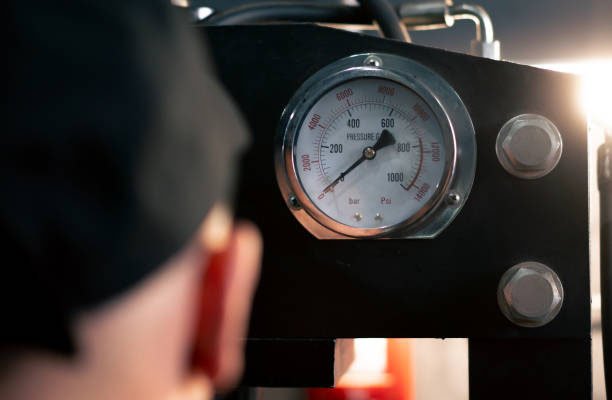
Burst pressure is not theoretical — it’s determined via destructive testing under controlled conditions. Here’s how it typically works:
- Sample Selection & Preparation
The hose (or hose + fittings assembly) is prepared in a lab rig. It’s fitted, sealed, and mounted in a way that mirrors real usage (length, mounting clamps, no kinks). - Slow Pressurization
Fluid (often hydraulic oil) is pumped in. Pressure is increased gradually (not in sudden jumps) to avoid shock loading. Controlled rate of rise is important so that failure is truly because of inherent weakness, not a sudden jolt. - Monitoring Until Failure
The test continues until a visible rupture, leak, or catastrophic failure happens. The pressure right before the failure point is recorded as the burst pressure. - Multiple Samples & Statistical Margin
It’s common to test multiple identical samples. You don’t just take the highest value; often the lowest or a worst‑case (minus tolerance) is used for specification to ensure safety across all units. - Conditions Control
Temperature, fluid type, mounting configuration, hose orientation, and test rate are all controlled and specified in industry standards so that burst pressures are measured consistently across hoses and manufacturers.
Because the test is destructive, the hose is discarded afterward.
IV. What Affects a Hose’s Burst Pressure?
Burst pressure isn’t just a number printed on the hose — it’s the result of deliberate design choices, materials, and manufacturing quality. Here’s what plays into it:
1. Reinforcement Layers
The biggest influence is the reinforcement structure within the hose. Most hydraulic hoses have layers of braided or spiral-wound wire:
- Single-wire braid: Good for lower pressures, but not ideal for extreme surges.
- Two-wire or four-wire spiral: Stronger, with higher burst ratings.
- Six-wire spiral: For ultra-high-pressure applications.
More layers and tighter braiding equal better resistance — and higher burst pressure.
2. Material Quality
- Inner tube: Must resist the hydraulic fluid (oil, water-glycol, phosphate ester, etc.)
- Reinforcement: Must handle tensile loads. Steel wire is common.
- Outer cover: Protects against abrasion, weather, ozone, and chemicals.
Poor quality materials degrade faster and lower the true burst threshold, even if the label says otherwise.
3. Hose Diameter & Wall Thickness
Thicker hoses with tighter reinforcement layers typically handle more pressure. But internal diameter also affects how force distributes — larger diameters can be more vulnerable to pressure surges.
4. Assembly & Crimping
A perfectly good hose can be ruined by bad assembly. If the fitting isn’t crimped properly, or if there’s excessive deformation, the burst pressure can drop drastically. That’s why certified hose assemblies are important.
V. Conditions That Reduce Burst Strength
Burst pressure ratings are based on ideal conditions — but real life is messier. Here are factors that can lower the actual burst pressure of a hose in use:
1. Temperature Extremes
- High temperatures soften the hose material, reduce reinforcement bond, and accelerate aging.
- Low temperatures make materials brittle and prone to cracking.
Many hoses come with temperature derating charts. A hose rated at 4,000 psi at 70°F might tolerate only 3,000 psi at 212°F.
2. Hose Flexing and Fatigue
Repeated bending, vibration, or pressure cycling causes fatigue in the hose structure — weakening it over time. Fatigue failures often occur before bursting but may still trigger rupture under pressure spikes.
3. Abrasion & External Damage
- Constant rubbing or impact can cut through the outer cover and damage reinforcement.
- Exposed reinforcement rusts and loses strength.
- Even small nicks or scratches can be failure points under high pressure.
4. Chemical Degradation
Hydraulic fluid that’s incompatible with the hose lining can eat away at it. So can ozone, solvents, acids, or even water contamination.
5. Age and Environmental Exposure
Aging hoses lose flexibility and structural integrity. UV light, ozone, and temperature swings break down the rubber or synthetic polymers over time — reducing burst pressure long before visible signs appear.
VI. How to Choose Hoses & Operate Safely Below Burst Limits
Understanding burst pressure isn’t enough — you need to design and operate systems that stay well below it. Here’s how to do that:
1. Choose Based on Working Pressure, Not Burst
Always pick a hose whose working pressure rating exceeds your system’s max pressure (including spikes). If your system runs at 3,500 psi and occasionally spikes to 4,000 psi, choose a hose with a working rating of 4,500–5,000 psi — not just one that claims a 14,000 psi burst.
2. Match the Safety Factor to the Application
Standard safety factor is 4:1, but you may need:
- 6:1 for high-risk environments (e.g. mobile mining)
- 2.5:1 or 3:1 in non-critical, controlled industrial systems
Follow local codes or OEM guidelines.
3. Avoid Pressure Surges
Use accumulators or dampers to absorb pressure spikes. Size your valves and pumps to avoid sudden shutoff or direction change that slams fluid into a closed line.
4. Replace Before Failure
Follow scheduled maintenance. Replace hoses that show:
- Bulging
- Stiffness or cracking
- Loose fittings
- Rusted or exposed reinforcement
- Leaking ends
If you wait until failure, you’re beyond the safe margin.
VII. Industry Standards for Burst Pressure Testing
Hydraulic hose manufacturers follow strict testing and rating guidelines set by globally recognized organizations. These standards ensure consistency, reliability, and safety across products.
Common Standards Include:
- SAE (Society of Automotive Engineers):
SAE J343 outlines hydraulic hose burst and proof pressure testing procedures. - ISO (International Organization for Standardization):
ISO 1402 specifies pressure testing methods for rubber and thermoplastic hoses. - EN (European Norm):
European standards provide additional classification and test rules, especially for metric-based systems.
Test Conditions Typically Include:
- Specified fluid type (often mineral oil or water-glycol)
- Controlled ambient and fluid temperature
- Defined hose length and bend radius
- Precise pressure ramp-up rate
- Monitoring until failure point occurs
Manufacturers test multiple samples and use statistical results to declare minimum burst pressures that meet or exceed these standards. Any deviation during testing — such as kinking, incorrect length, or mounting errors — can invalidate the results.
VIII. Common Myths About Hydraulic Hose Burst Pressure
There are several misconceptions floating around about hose ratings. Let’s clear them up:
1. “You can run close to burst pressure if only for a short time.”
False. Even brief operation near burst pressure risks sudden rupture. Always design for working pressure with a safety factor — not for burst.
2. “A thicker hose always has a higher burst pressure.”
Not necessarily. What matters more is the reinforcement structure, not just thickness. A well-designed two-wire hose can outperform a thicker single-wire one.
3. “Burst pressure is a ‘useful’ rating in regular operation.”
Incorrect. It’s a design boundary and emergency limit. Your daily operation should always be based on working pressure.
4. “Old hoses still meet original burst pressure.”
Wrong. Aging, heat, UV, fatigue, and chemical exposure degrade material integrity. Burst pressure reduces over time, even if no damage is visible.
5. “If the system pressure is low, any hose will do.”
Not true. Pressure is just one factor — you must also consider temperature, fluid compatibility, bend radius, and environmental exposure.
Conclusion
Burst pressure is one of the most vital specifications in hydraulic hose selection. It defines the failure threshold, not the usage zone. Understanding it — and respecting the limits it implies — is essential for:
- Safety — to protect people and equipment
- Reliability — to reduce downtime and hose replacements
- Efficiency — to avoid overengineering or misapplication
Engineers, technicians, and operators must work together to ensure hydraulic systems are built with hoses that have enough margin to handle not just expected loads, but also spikes, wear, and the unexpected.
A hose that doesn’t burst isn’t lucky — it’s properly selected and used. That’s the goal.
FAQs
Q1: What happens if a hydraulic hose bursts?
When a hose bursts, high-pressure fluid can spray out violently — potentially causing injury, fire risk, or equipment damage. It can also release fragments if the reinforcement fails.
Q2: Can you repair a hose after burst failure?
No. A burst hose must be fully replaced. The structural integrity is compromised and it’s unsafe to reuse or patch.
Q3: How often should hydraulic hoses be replaced?
There’s no fixed time. Factors like usage intensity, temperature, bending, and environment determine lifespan. Some guidelines suggest inspection every 3–6 months, and proactive replacement after 1–2 years in high-stress use.
Q4: What margin should I use between working and burst pressure?
A 4:1 safety factor is standard. Some applications require 6:1. Always design for working pressure, not burst.
Q5: Are burst pressures the same for all hose types?
No. Each hose class (based on reinforcement, material, diameter, and construction) has different burst pressure ratings.

